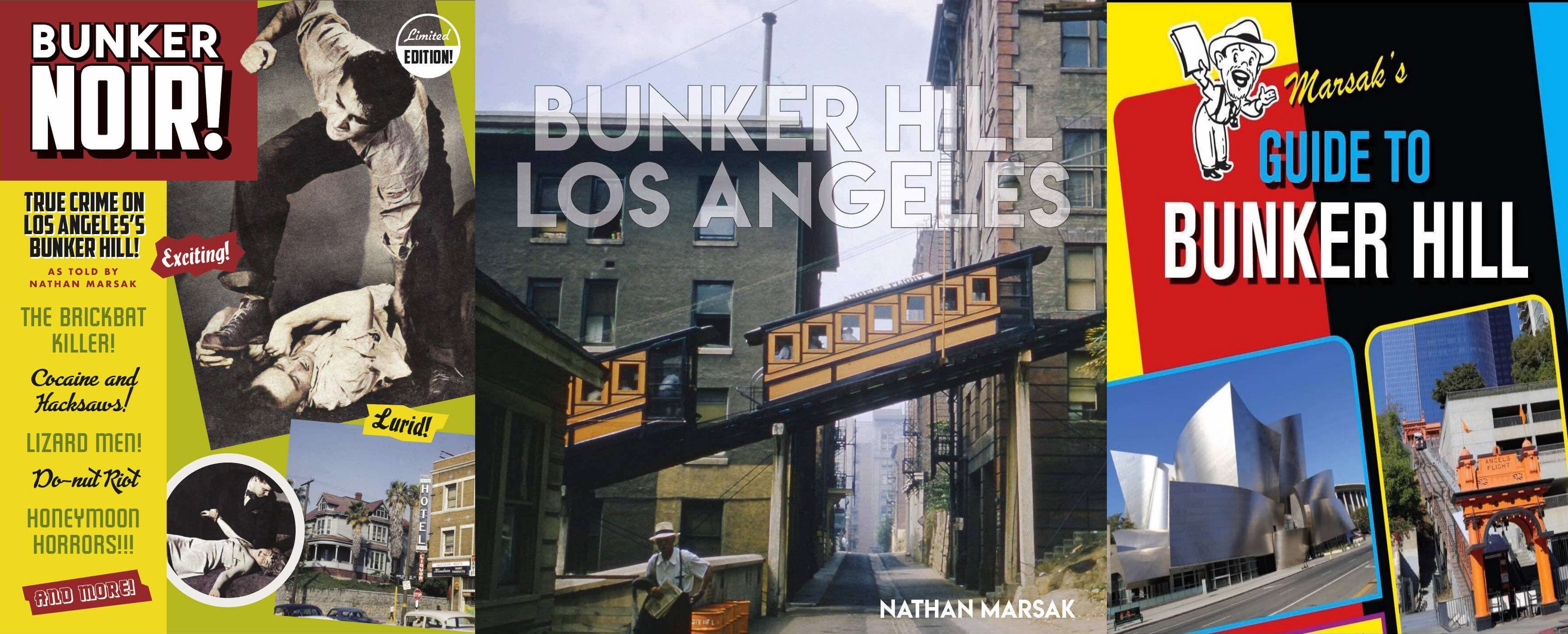(Having recently published Marsak’s Guide, I thought it would be fun and instructive to post about some of the interesting extant structures on our modern Bunker Hill, as featured in the book. Today, a few words and pictures about the Bonaventure. Will we be going inside the Bonaventure on the tour, one week from now? OF COURSE WE WILL.)
I was a youthful Beatlemaniac. So was my buddy Morgan (who hangs out with Paul McCartney to this day), so for a number of years his parents drove us down to the Bonaventure for Beatlefest.
My memories of the Bonaventure are unusually acute. Remembrances of 1970s LA are as you might expect: a bleak and blighted hellscape, devoid of trees, replete with junkies. But the Bonaventure was a bizarre sparkling jewel in a smoggy, sepia city. To gain ingress took some doing, it being surrounded by a giant brutalist concrete wall, but once inside, it was a futuristic maze, and dark as an airport bar.
Back at home I’d watch TV and marvel that this glitzy futuropunk wonderland was not only representative of the 25th century, but a harbor for sassy waitresses!
As I matured and my interests turned to architecture, I discovered the Bonaventure was designed by a nice southern gentleman named John Portman, whose futuristic hotels were in general legendary for their soaring atria. I enrolled at UC Santa Cruz; Fredric Jameson had been a HisCon prof there till 1985—the year I arrived—so his presence was still felt, strongly, and of course any 80s-era study of architecture entailed reading Jameson’s critique of the Bonaventure (see x, y, and especially z, because it has such great vintage footage of the Bonaventure). 1990 saw Mike Davis’ City of Quartz, wherein he called out the Bonaventure as being part of a “single, demonically self-referential hyper-structure, a Miesian skyscape raised to dementia” which was done specifically to erase any future “non-Anglo urbanity.” Jameson is a lovable kook, and Davis an embarrassing fabulist, but whatever, all grist for the mill. Me, I just dug the Bonaventure, and moved to Los Angeles specifically so I could spend all my time in her revolving bar.
Thirty years into my Los Angeles sojourn, after countless revolutions in the BonaVista Lounge, and with all three of my recent books about Bunker Hill featuring the Bonaventure, I can say with no small authority, have you not spent time soaking up its sublimity, or had a cocktail in the (newly-reopened after three years!) revolving lounge, you are not a person. Do not argue this fact, for you would be wrong.
The above being my long-winded way of saying hey! let’s look at some vintage shots of the Bonaventure you may not have seen before, paired with some recent comparison captures.









That concludes my then-n-now Bonaventure roundup for the time being (at some point I shall have to scan for you my collection of amateur late-70s Bonaventure interior slides).
I trust that, again, I will see you on the 17th for our jaunt inside the Bonaventure, and a vaster tour atop Bunker Hill…so until next Saturday, I will just leave you with this.

1976 through 1978, until we moved to Oregon… we made our Friday night trek from Alhambra to the Bonaventure rotating bar … then off to somewhere wonderful for dinner… Perhaps Sarno’s or Lawry’s La Cienega. Wonderful times. Loved your article !!!
LikeLike
I like the “before” interiors better. Thank god for photography!
LikeLike
Fantastic eye candy!!!
LikeLike